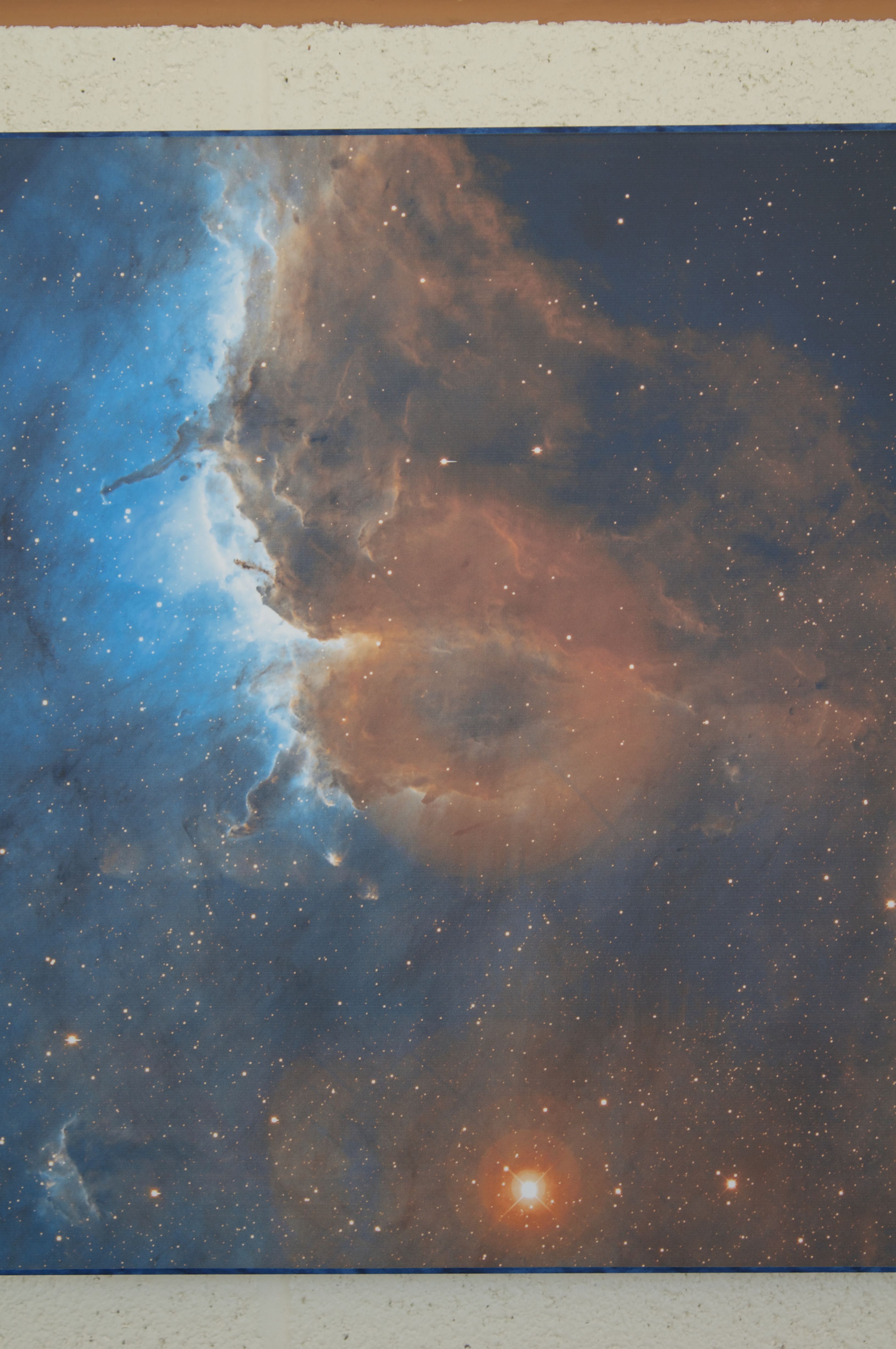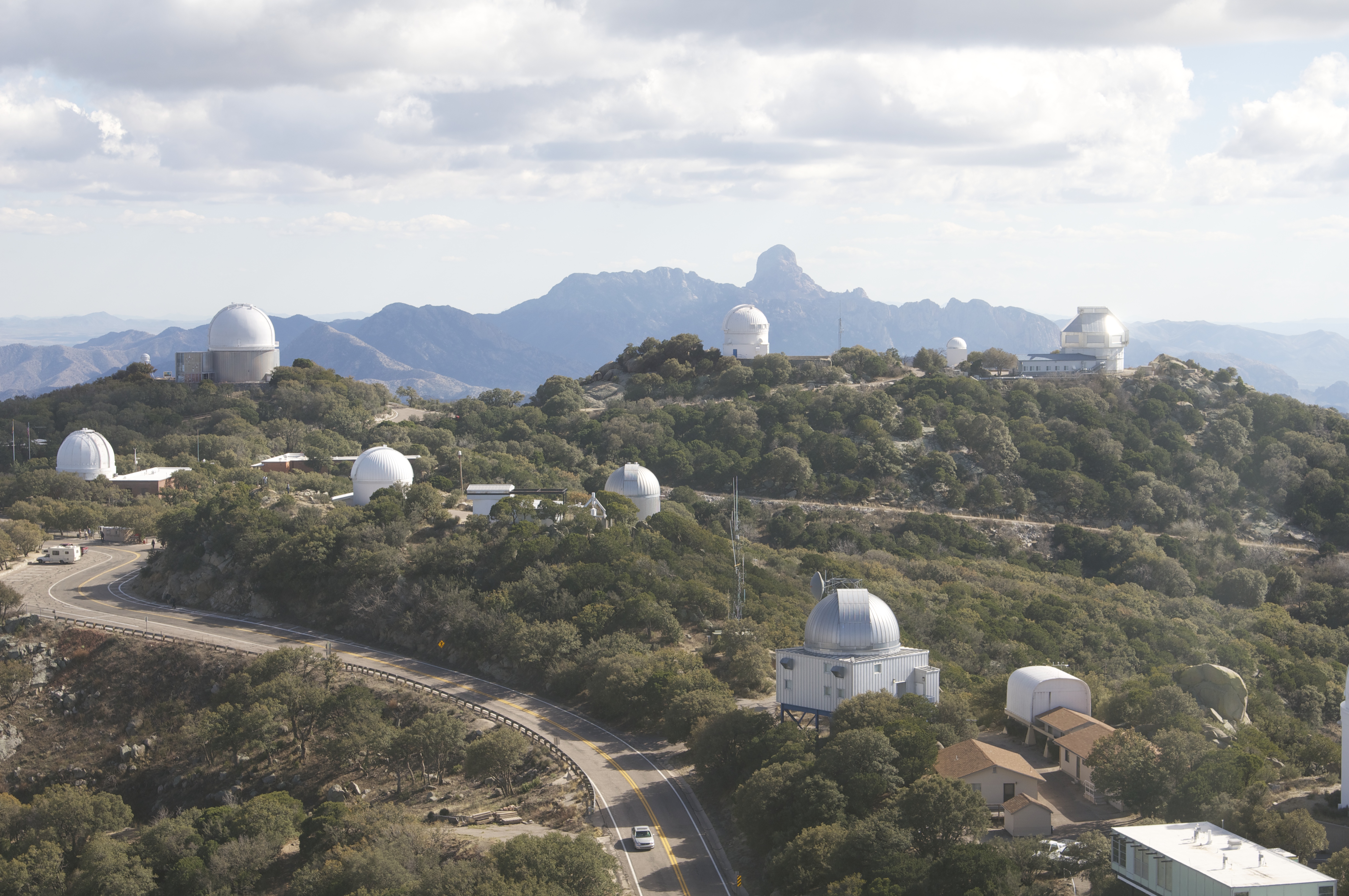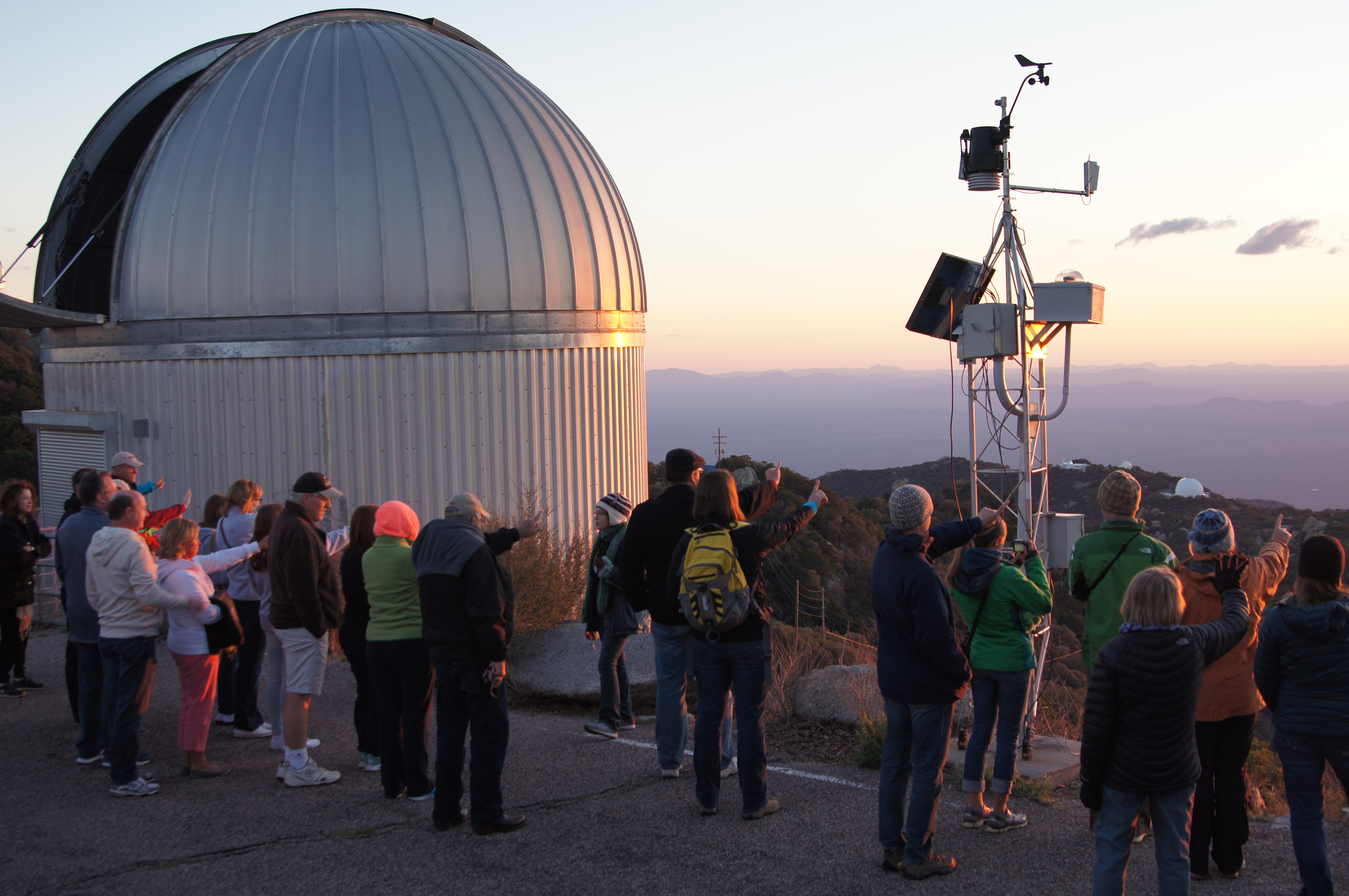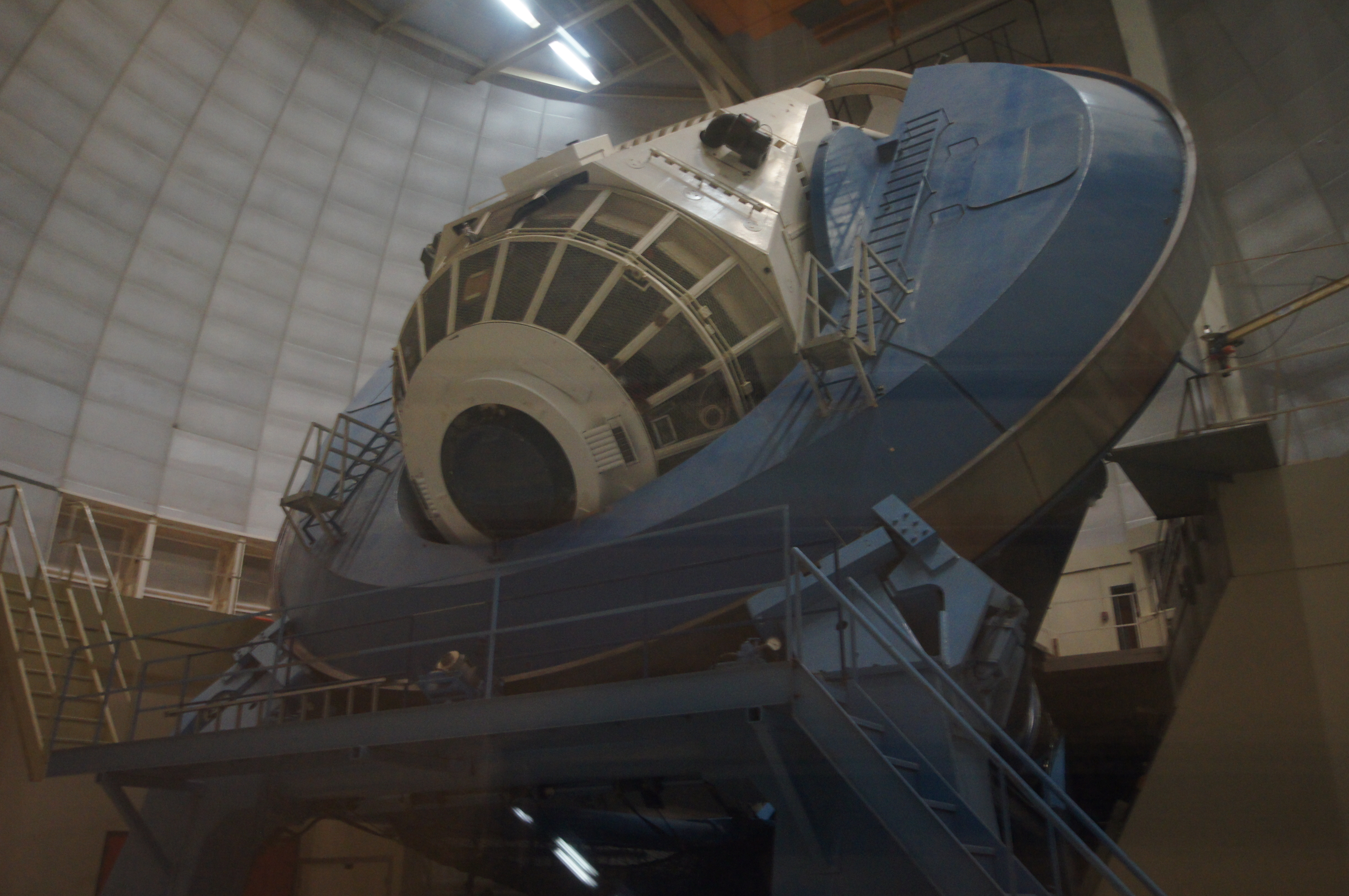Special to the Washington Post
Aug. 24, 2015
A journey of 335 million miles begins at 6,875 feet. It does for me, anyway, as I stand on an Arizona mountaintop on a dazzling March night counting Jupiter’s moons.
I am at the Kitt Peak National Observatory, home of the world’s largest collection of research telescopes — 26 in all — and one of the United States’ preeminent sites for serious study of the heavens. The observatory also offers public stargazing programs, ranging from the introductory evening I am enjoying to overnight affairs.
“How many do you see?” our guide, Carmen Austin, asks as I peer into the eyepiece of one of Kitt Peak’s more modest instruments, a 16-inch Ritchey-Chrétien telescope.
“Three,” I answer. “No . . . wait . . . four!”
They hang like a double set of diamond earrings, framing the massive, striped face of the largest planet in our solar system. I am on the roof of a small observatory with 11 other space tourists; two other groups are on other telescopes elsewhere on the grounds.
I cede the eyepiece to the woman next to me and tilt my naked eyes up, into a blizzard of celestial bodies that might be more mind-bending than my intimate view of Jupiter.
Kitt Peak, southwest of Tucson, is the second-highest point in the Quinlan Mountains, part of the 2.8-million acre reservation of the Tohono O’odham Nation. Veering from the forlorn desert and starting up the 12-mile access road to the observatory conveys a sense of leaving a Cormac McCarthy novel for somewhere stranger, a feeling amplified by the “NO SERVICES” sign at the road’s entrance and the 20 degrees Fahrenheit that separate base from peak.
The mountain’s elevation is a key reason the National Optical Astronomy Observatory, the national center for ground-based nighttime astronomy, chose this site in the 1950s as its primary base of operations in the United States. (NOAO also helps run a telescope atop the nearly 13,800-foot Mauna Kea in Hawaii.)
Although Kitt Peak is far from the highest accessible point in the country — or even in Arizona — it offers a suite of conditions favorable to astronomy: very low light pollution; reasonable proximity to Tucson’s international airport and the University of Arizona’s astronomy department; and exceptionally dry air, which produces fewer, thinner and less-frequent clouds than do more humid climates.
Moisture is a mortal enemy of stargazing equipment, explains Bill Buckingham, visitor center manager at Kitt Peak. “A dewdrop on a lens can blur an image, and could carry pollutants that form a mild acid and eat away at the aluminum coating on [telescope] mirrors,” he says.

Thin clouds dull the midday sun as my rental car wheezes to the summit. White domes rise from the rocky, forested ridge like modernistic vacation homes.
The observatory is open during the day for touring, which affords close-up looks at — but not through — three of the facility’s largest instruments, and occasional supervised sessions on solar telescopes.
I park in an asphalt lot and walk into the visitor center, where the floor displays include replicas of telescopes, a demystification of infrared light and a poster touting all that astronomy has spawned — roller coasters and X-ray machines for luggage, digital cameras and (of course!) “awe-inspiring images” of the cosmos.
Outside, past a row of austere brick dormitories for visiting astronomers, a hand-scrawled sign steers me to the Razdow observatory — a small open-roof structure — where volunteer guide Phil Ogden is manning three solar telescopes. Like other telescopes, solar devices use mirrors or lenses to produce brighter, larger images than the naked eye would capture. Unlike other telescopes, solar-viewing instruments include filters so that users don’t incinerate those naked eyeballs.
Ogden tells me I am looking through a Coronado four-inch-diameter lens with a hydrogen-alpha filter. I nod knowingly. The Coronado renders the sun a haunting atomic red as it slips into fleeting view among clouds. On a cloudless day viewers might witness solar flares or other dramatic surface-of-the-sun activity.
Back outside the dome I see, across a valley, the 7,730-foot summit of Baboquivari, a granite monolith considered by the Tohono O’odham to be the most sacred spot in their domain (Kitt Peak is the second). In the far distance the Sierra Madre rise from northern Mexico.
It is serenely quiet up here. Among the few others touring the grounds are Keith and Holly Cochran from Durango, Colo., who have booked a private, all-night program.
“We’re not astronomically inclined but we really wanted to do this,” Keith tells me. “It’s his birthday present,” Holly chimes in. “We called all over to find this, even down to Chile. Not many places offer anything like it.”
I let myself into the observatory that houses the world’s largest solar telescope, the McMath-Pierce, which relays the sun’s rays off of three mirrors positioned in a 500-foot shaft, helping diffuse the intense light for more precise observation.
Next I enter Kitt Peak’s crowning glory, the Nicholas U. Mayall telescope. Named for the observatory’s second director, the scope occupies a 187-foot-high, 500-ton dome that is visible from 50 miles away — a claim I verified earlier in the day when I spotted it from Gates Pass, on the west side of Tucson. The telescope boasts a 27-foot-wide shutter and 706,660-pound mounting.
The Mayall was revolutionary when it went operational in 1973, enabling the study of objects well beyond our galaxy and, a few years later, the discovery of dark matter. It has since been surpassed in size and complexity but remains beloved in the astronomy community because, Buckingham says, “almost any interested astronomer” with a good research case can gain access.
NOAO also has partnered with the Department of Energy to use the device to capture spectra of up to 5,000 galaxies at a time from — get this — up to 10 billion light years away. That, says Buckingham, will yield a detailed motion map of the universe and significantly advance astronomers’ understanding of dark energy, that particle-filled emptiness composing 68 percent of the universe that could just up and collapse, like a moody souffle, and wipe out literally everything. Maybe ignorance really is bliss!
From the dome’s observation deck, 10 stories up, the telescope looks like a space capsule, with a wide cylindrical base tapering to a triangular point. It is operated from an adjacent control room, where astronomers view images on computer screens. The observation area also features breathtaking images taken by the Mayall and, through a generous windowpane, 360-degree views of the surrounding desert. I note with relief that the clouds have all but vanished.
Back at the visitor center, with nightfall approaching, I meet Nick Nicastro, an author from Northern Virginia who has signed up for the night session with his daughter Nell.
“I’ve been to all the places where you’re supposed to feel religious — Jerusalem, Rome, Turkey,” Nicastro tells me. “But when I look out to space that’s when I feel most spiritual.”
Our session opens not with prayer but with a slide show on, among other things, light pollution. Satellite photos of the Earth at night starkly reveal our reliance on artificial illumination. The entire eastern half of the United States, for example, is ablaze, and the West Coast isn’t much better. The wattage is similar in most of Europe and urban areas of Asia and the Middle East.
Southern Arizona is among the darker patches in the Lower 48, but before we enjoy that in person we have one more daylight activity: The guides lead us to a western promontory of Kitt Peak to watch the sunset swaddle the desert in a crimson quilt.
Finally, the spiral light of Venus beams through the dark pastels of dusk.
The guides hand each of us a thumb-operated infrared light, which will be our sole source of artificial light for the evening. The human eye naturally adjusts for night vision, but once interrupted by white light, even from a brief glimpse at a cellphone screen, it can take 20 minutes or longer to reset.
Carmen trains the telescope on Venus. Instead of mountains, rivers and little green dudes we see a larger, brighter version of the original — as though a headlight we’d been watching from a mile away is suddenly upon us.
Next we look at the Orion nebula — a “nursery for stars,” Carmen calls it — which hovers like a gem-studded cobweb below the three-star belt of Orion. This is the most outer-spacey view of the night, a swirling haze of gas and dust 1,300 light years (7.6 quintillion miles) away.
Our last look through this telescope takes us even further, to the M82 galaxy. We get a side view, like looking at the edge of a Frisbee, and the picture is an underwhelming, if tantalizing, gray smudge in the sky.
For an encore, the full group of 50 gathers outside the visitor center for a tutorial on the constellations. We use first our unaided eyes and then 20-by-80-power binoculars, orienting from the brightest visible stars to find our way around the cosmos.
The binos are remarkably effective and convenient, both for portability and ease of scanning the sky. My view keeps wandering back to the Orion nebula. The longer I linger on it the more I can see. But I can’t quite make out whether its residents are having a backyard cookout, watching the NHL playoffs or just peering curiously back at us, from their own mountaintop within their own sacred land.
To be safe, I flash a peace sign, trusting that its meaning is indeed universal.
The story original appeared in The Washington Post




Comments